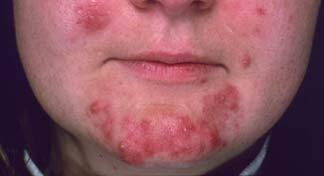 Feedback
FeedbackWhat are the benefits of the pneumococcal vaccine? This vaccine protects against pneumococcal (pronounced new m'COCKL) infections, which mostly hit children under 5 years and can lead to some of the worst childhood diseases. Pneumococcal infection is one of the most common causes of death in the United States the disease is prevented with vaccines. Before the vaccine came along, pneumococcal infection caused more than 700 cases, 13,000 blood infections and 5 million
in children under 5 each year, according to U.S. Centers for Disease Control and Prevention (CDC). The vaccine is effective in 90 percent of people who receive it. Responsibility for errors pneumococcal bacteria called pneumococcus. They live in the mucosa of the nose and the back of the throat. And when they are quite abundant, they can strattera cost cause infections in the respiratory tract, middle ear, sinuses or. Antibiotics such as penicillin can kill them, but 40 percent of strains resistant to antibiotics. Pneumococcal bacteria spread by close contact and by coughing and sneezing. Diseases such as meningitis and pneumonia can occur several days after infection. The symptoms of pneumococcal pneumonia usually include fever and chills with shaking or trembling, and chest pain, cough, shortness of breath, rapid breathing, palpitations, fatigue and weakness. Nausea, vomiting, headaches are often associated with pneumococcal pneumonia, but they are less common. Pneumococcal bacteria also causes some of the most serious in children. In February 2010, the FDA licensed a new vaccine to prevent pneumococcal infections in children: Prevnar 13, or PCV13. PCV13 protect against a larger number of strains of pneumococcal bacteria than the previous vaccine, PCV7. Such protection is important, because PCV7 does not protect against some strains of bacteria have become more common in recent years. According to the U.S. Centers for Disease Control and Prevention (CDC), the new vaccine protects against strains of pneumococcal bacteria that often cause severe pneumococcal infections in children. What is the recommended schedule? The recommended number of units of four doses. Recommended Ages What if your child has already received the old vaccine 1) children who received one or more doses of PCV7 complete immunization series with PCV13 and
2) children 14 to 59 months of age who have received all their PCV7 dose received one dose of PCV13. To track vaccination of the child, use of BabyCenter. Who should not get the vaccine PCV? Children who have been life-threatening allergic reaction to previous shot PVC or some other vaccine should undergo vaccination PCV. If your child was so severe reactions to immunizations, talk to your doctor about the vaccine PCV is appropriate. Are there any precautions I should do? Mildly affected children may be vaccinated. But if your child has high fever or serious illness such as pneumonia, wait until her health improves before taking her to the vaccine. It will better cope with immunization, when she is healthy. What are the possible side effects? About a third of children vaccinated redness, discomfort or swelling at the injection site. The third also develop a slight fever. One in 20 has a higher fever over 102. 2 degrees. Severe allergic reactions are rare, but possible with any vaccine. See what our expert says about how to tell whether your child feels. emailUpsellIframe {
overflow: hidden;}





